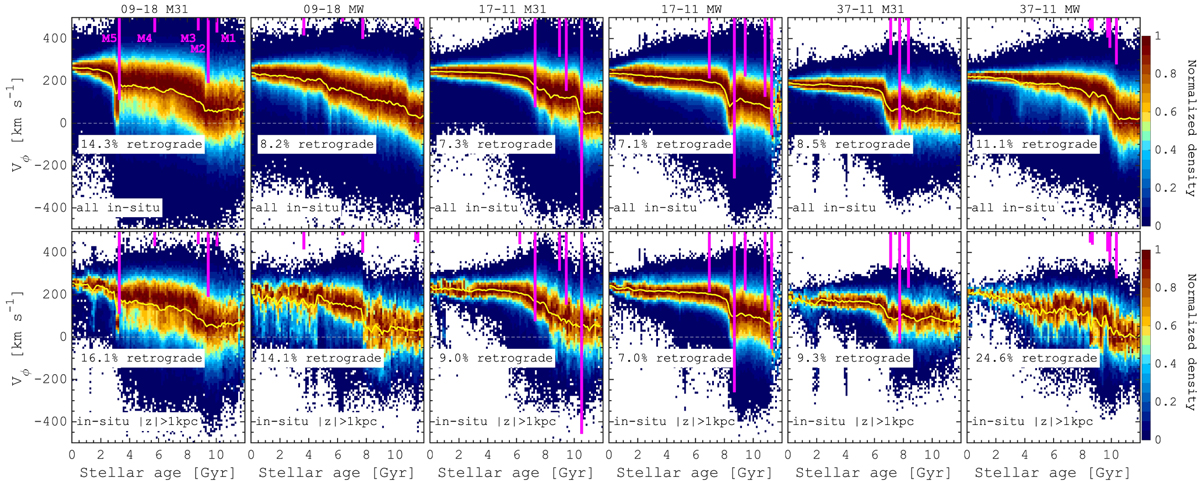Fig. 14.

Download original image
Structure of the azimuthal velocity as a function of the stellar age in M 31 and MW HESTIA galaxies. Distributions were normalized by the maximum value at a given age. The top row shows all in situ stars, while the bottom one corresponds to the in situ stars > 1 kpc away from the galactic plane, mostly excluding the disc component. Magenta vertical lines highlight five of the most significant mergers (M1–M5), in terms of the stellar mass ratio, where the length of the line shows the stellar mass ratio of the merger where the vertical panel’s size is assumed to be unity. The mean Vϕ values are shown by the yellow lines. The numbers in white boxes show the mass fraction of counter-rotating stars (negative azimuthal velocity) among the sample presented in a given panel. The azimuthal velocity generally decreases with the stellar age due to secular disc heating; however, at the time of the mergers, it falls faster, resulting in slowly rotating stellar populations similar to the Splash/Plume stars discovered in the MW. We note, however, that in all of the galaxies, except for M 31 and MW in the 37–11 simulation, the impact of several mergers is clearly seen in the stair-step-like distributions.
Current usage metrics show cumulative count of Article Views (full-text article views including HTML views, PDF and ePub downloads, according to the available data) and Abstracts Views on Vision4Press platform.
Data correspond to usage on the plateform after 2015. The current usage metrics is available 48-96 hours after online publication and is updated daily on week days.
Initial download of the metrics may take a while.


